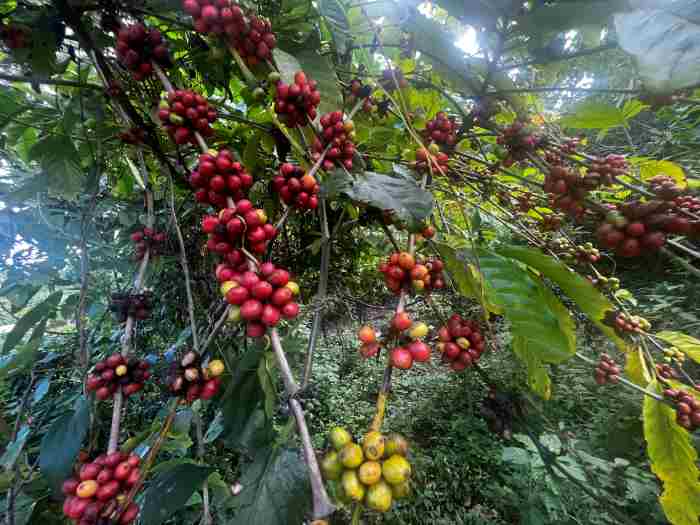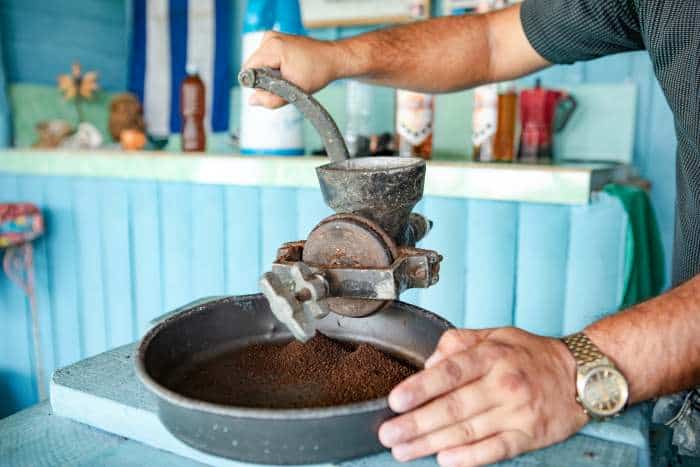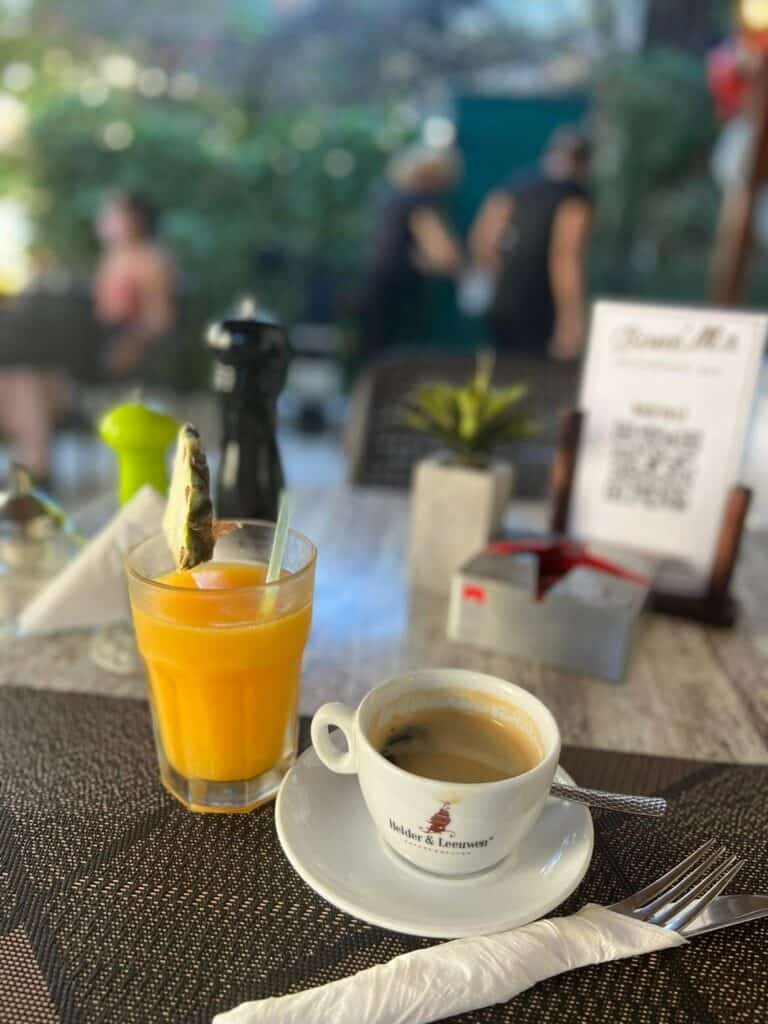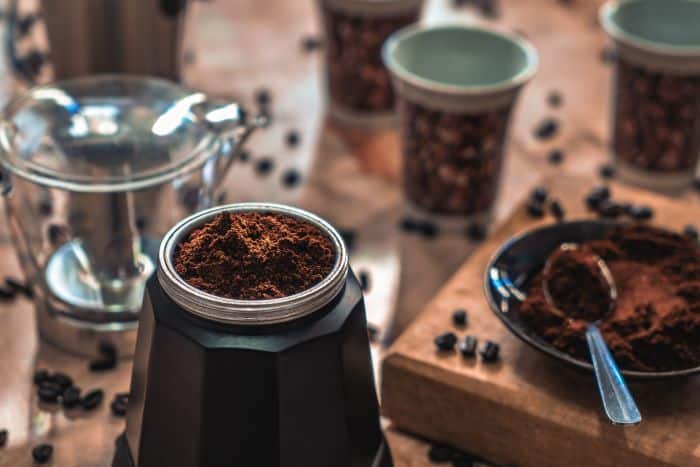Do you feel like you’re stuck in a morning coffee rut, making the same old brew every morning (as long as it’s hot)? In that case, it is time to really shake things up and explore the world of the best Cuban coffee you can find.
Before I stayed in Cuba over time, I had coffee like a typical European: black, unsweetened, and a lot.
After years of traveling to Cuba, however, coffee is not coffee without being really strong with a bit of sugar. I often got mine from a ventanita close to where I stayed in Havana, but you can find sweet, strong Cuban coffee in ventanitas in Miami, too.
Here, I have compiled the top 8 Cuban coffee blended brands you really need to try if you love coffee. Hint: the coffee beans are not all from Cuba. And another thing, you need this stovetop-kind-of coffee maker to get it just right!
- Launch of Moka Coffee Fest Line to celebrate International Coffee Day (10/1/21), especially for Coffee Lovers – I Love Coffee!!! These are the traditional Moka 3 and 6 cup coffee makers in silver, black and red colors.
- Package Quantity: 1
- Product Material: Aluminum
- Product Color: Red

9 Best Cuban Coffee Brands You Need In Your Life!

As you venture into the world of Cuban coffee, these are 8 brands you definitely need to know about.
- Cafe Aroma is a classic, bold espresso blend that is created by a family that has emigrated from Cuba. Roy and Ines wanted to provide the Latino community in the US with authentic coffee, which started as a kitchen-made blend and is today a popular brand still run by their descendants.
- Cafe Bustelo is another popular option for its rich, strong flavor, produced by a Spanish who moved to Cuba, where he fell in love with the way the Cubans blend and prepare their coffee and decided to create his own.
- Kahwa is a brand that many seasoned Cuban coffee enthusiasts swear by. It has a smooth, suave taste from 100% premium quality Arabica beans selected from different origins around the world.
- For those with a taste for something a little different, there’s also Cafe Sello Rojo, which offers a unique blend of Colombian and Cuban coffee beans for a unique one-of-a-kind flavor.
- And if you’re feeling adventurous, why not try Cafe Pilon’s Espresso Style blend, which promises an extra intense flavor that’s sure to wake up your tastebuds!
- If you’re looking for a more traditional Cuban coffee experience, La Llave (the key) is a great choice, a dark roasted and intensely aromatic bold flavored Latin-style espresso with over 140 years of coffee-producing experience.
- Naviera Cuban Style Dark Roast is a classic that was produced and sold in a shop in Florida for many years. Although the shop is closed today, you can still get this US-produced Cuban-style blended and ground coffee online.
- Mayorga is a 100% organic brand, using beans from various coffee farms across Honduras, Peru, and Nicaragua. The roasting is perfect for Cuban coffee brewing, although the beans are exclusively Arabica.
- BONUS: Cubita is a coffee brand perfect for Cuban coffee, as these beans are roasted and ground in Cuba! Due to the ongoing sanctions, this coffee can be hard to order to the US, as importing anything directly from Cuba to the US is not possible. But if you visit Cuba, you will definitely find it!
Have you tried any of these? In that case, which is your favorite, and why? Let me know in the comments!
Below you can find out how to get your favorite brand, or continue to the end of the article to learn more about Cuban coffee.
Also read: How To Travel To Cuba From The US – Easy Guide!
Get Your Cuban Coffe Blend Online Here
- CUBAN STYLE COFFEE PERFECTION: Indulge in the true essence of a gourmet, full-bodied dark roast sourced from the finest espresso beans
- PERK UP YOUR DAY, YOUR WAY: Fill your space with the captivating aroma of our ground dark roast coffee, perfect for any brewing method, whether it’s a home espresso machine, coffee maker, or stove-top pot
- SEALED FRESHNESS: Comes in a 1 or 4-pack of vacuum-sealed bags, ensuring remarkable freshness for hot and iced coffee experiences
- 🔥 This Lexamart bundle offer consists of 2 items: One 32-Ounce Bag (2 Pounds) of Supreme by Bustelo Whole Bean Espresso Style Dark Roast Coffee and 5-count, Eco-Friendly and Individually Wrapped Bamboo Wood Stirrers by Lexamart.
- 💯 Dark roast coffee blend made with 100% Arabica coffee beans roasted to perfection.
- ☕️ Espresso-style coffee with a rich, full-bodied flavor.
- Cubano is a traditional cuban blend dark roast that is packed with a strong and robust flavor, with a sweet finish
- Mistral is a medium roast that has strong body with a sweet, creamy finish, and a pleasant aftertaste that will linger on your palate
- The bag features a one-way valve that is made to keep out oxygen and release gasses from the coffee so you can brew the fresh cafe quality coffee from Kahwa you love without leaving the house
- 🔥 This Lexamart bundle offer consists of 2 items: One 32-Ounce Bag (2 Pounds) of Pilon Gourmet Whole Bean Espresso Style Dark Roast Coffee and 5-count, Eco-Friendly and Individually Wrapped Bamboo Wood Stirrers by Lexamart.
- 💯 Dark roast coffee blend made with 100% Arabica coffee beans roasted to perfection.
- ☕️ Espresso-style coffee with a rich, full-bodied flavor.
- Packaging design may vary starting on February 2024
- 100% COLOMBIAN ARABICA ESPRESSO: Pure Arabica Colombian espresso. No blends. Features a dark roast & medium grind, forming a balanced body with bold flavor, yet light notes of sweetness. Sello Rojo espresso is freshly roasted and vacuum-sealed at the origin to preserve its freshness, lush aroma, and gourmet rich flavor
- BEHIND THE BEANS: Sello Rojo’s espresso is sourced directly from family farms who take pride in their meticulously hand-picked coffee beans. Harvested at their peak, our roasted coffee beans are pristinely washed and sundried to perfection. All production occurs at the source, taking artisanal care to achieve our coveted EXCELSO grading classification
- Rich smooth flavor and American made – roasting every day in our new larger facility In Tampa
- CRAFTED TO PERFECTION: Experience the rich, bold taste of Mayorga’s Cubano Roast Organic Whole Bean Specialty Coffee —an authentic Cuban-style dark roast blend perfected by our Roastmaster. Enjoy our coffee beans with hints of sweet vanilla, syrupy smokiness, and a smooth, bold finish with low acidity.
- MADE FROM 100% ORGANIC ARABICA COFFEE BEANS: Sourced directly from our small partner farmers in Peru, Honduras, and Nicaragua—ensuring exceptional quality you can taste. This organic whole bean coffee ensures the freshest experience every morning when you grind it at home.
- SIGNATURE LATIN SLOW-ROASTING: Expertly roasted in small batches using our signature Latin slow-roasting technique, we bring out the distinct aroma of each coffee bean. Roasted and freshly packaged in our Rockville, U.S., facility this Specialty Organic whole bean coffee has become a firm customer favorite.
3 Top-Rated Stovetop Coffee Makers For The Perfect Brew
- The original moka coffee pot: Moka Express is the original stovetop espresso maker, it provides the experience of the real Italian way of preparing a tasteful coffee, its unique shape and the inimitable gentleman with moustache date back to 1933, when Alfonso Bialetti invented it.
- Made in Italy: it is Made in Italy and its quality is enhanced by the patented safety valve which makes it easy to clean and its ergonomic handle, available in many sizes and suitable for gas, electric and induction (with the Bialetti induction adapter plate)
- How to prepare the coffee: fill the boiler up to the safety valve, fill it up with ground coffee without pressing, close the moka pot and place it on the stovetop, as soon as Moka Express starts to gurgle, turn the fire off and coffee will be ready
- Venus is the perfect combination of tradition and innovation: the original induction coffee maker that prepares a perfect coffee, with a Made in Italy taste from a pot with a unique design.
- Bialetti Venus is made in 18/10 stainless steel of the highest quality to guarantee durability over time and an unmistakable style.
- How to use Bialetti Venus: fill it up with ground coffee, close the pot and place it on the stovetop, as soon as Bialetti Venus starts to gurgle, turn the fire off and coffee will be ready
- 🙌 UPGRADED METAL HINGE – We swapped the plastic out with metal so it will no longer break.
- 🎁 PERFECT FOR GIFTS – Elegantly packaged with stylish magnetic gift box.
- ☕️ 6 ESPRESSO SIZE CUPS – Espresso cups are 2oz each. Total capacity is 12oz.
- 🧑🍳 GAS, ELECTRIC or INDUCTION – Works on all stove types at home or for camping.
- 🏠 LUXHAUS QUALITY & WARRANTY – We have been in business for 10+ years and stand behind our products.
Cheet With Coffee Pods!
- CUBAN STYLE COFFEE PERFECTION: Delight in the authentic taste of gourmet, full-bodied dark roast with Café Aroma K-cup pods, crafted from the finest espresso beans, embodying the rich coffee heritage of Cuba.
- UNIVERSAL BREWER COMPATIBILITY: Conveniently designed for use with Keµrig machines and other preferred brewers, these coffee K-cups ensure a quick, effortless coffee experience to kickstart your morning.
- PERSONALIZE YOUR BREW: Whether you savor it black or love experimenting with additions like milk, cream, syrups, or spices, our coffee pods offer the perfect canvas for crafting your personalized coffee experience every day.
- Start your day than with the rich espresso taste of Café Bustelo espresso roast coffee K-Cup pods. With Café Bustelo K-Cup Pods, you’ll feel satisfied and energized.
- Café Bustelo roast coffee features a dark, full-bodied blend of some of the finest espresso beans.
- Pods have built-in coffee filters – no measuring and no mess.
- [Flavorful Cafe Oriente Dark Roast Coffee]: Experience the bold allure of Oriente Dark Roast Cuban Coffee, featuring an intense aroma complemented by notes of dark cocoa, vanilla, chicory, and smoky caramel undertones. Its boldly smooth full-bodied profile delivers a richly powerful dark taste that lingers on the palate with each purposeful sip.
- [Delicate Process]: Crafted through a meticulous manual small batch preparation process, Oriente coffee beans are handpicked from steep hillsides and transported by mules for grain drying execution. Our exclusive coffee blends the rich history of Cuban coffee with modern technology, harmonizing traditional methods and preparation for a superior Cuban coffee experience.
- [Effortless Convenience]: Oriente coffee pods are 100% Solar Energy Produced, and are designed for use with nearly all compatible single-serve Keurig K Cup brewers. They are also made from recyclable #5 plastic materials and feature easy-peel tabs, making them a convenient and friendly choice. Check your local recycling facilities for more information; not recyclable in all communities.
The BEST Cuban Coffee
As with any rich culture, the history of coffee in Cuba is worth definitely exploring.
From the Spanish colonial era to the revolutionary period, Cuban coffee has been an integral part of the country’s identity.
With its rich history and culture, Cuban coffee is not just a caffeine fix; it has developed into an experience.
With so many excellent coffee brands for Cuban coffee available, it can be hard to know where to start.
Mind you, delicious coffee brands for Cuban coffee are not necessarily produced in Cuba, but they are roasted and ground for the perfect Cuban coffee taste!
But don’t worry – in the next section, you will find some tips on finding the perfect Cuban coffee blend for beginners.
The Perfect Cuban Coffee Blend for Beginners

If you’re new to the world of Cuban coffee, it can be hard to figure out what the perfect blend to start with is. Fortunately, there are a few brands that are particularly beginner-friendly.
One such option is Cafe Bustelo, which offers a rich and smooth flavor that’s not too overpowering. Another good choice for novices is Cafe La Llave, which has a slightly milder taste.
When trying a new type of coffee, it’s always a good idea to start with a small bag or container so that you don’t waste too much if you don’t like it.
Additionally, don’t be afraid to experiment with different brewing methods.
The connoisseurs like to use a French press or drip coffee maker to find the perfect preparation for their tastes, so why not give that a go?
Once you’ve found a Cuban coffee blend that you like, you may want to explore the different regions in Cuba where the coffee is grown.
Understanding the unique flavor profiles that come from each region can help you hone your preferences further and choose the perfect cup of Cuban coffee every time.
The Best Cuban Coffee Beans Used for Blends

What makes Cuban coffee so unique? Well, it’s actually all in the coffee beans.
Cuban coffee bean blends typically combine a combination of arabica and robusta beans, with some varieties incorporating a small number of peaberry beans for added complexity.
The best Cuban-grown coffee beans used for blends are typically grown in the eastern part of the country, around the Sierra Maestra mountain range, and Pinar del Rio in the west.
These beans are known for their velvety texture, bold flavor, and sweet aroma.
The beans used for Cuban coffee are usually medium to dark roasted, which gives the coffee its signature strong, smoky flavor.
Next time you sip on a cup of Cuban coffee, take a moment to appreciate the history and culture that go into each blend. The beans may be small, but their impact is mighty.
The History And Culture Of Cuban Coffee

The coffee industry in Cuba has deep roots, going all the way back to the 18th century when Spanish colonists ruled the island and brought their knowledge of coffee cultivation.
The first coffee plant was brought to Cuba in 1748 from the Dominican Republic by a guy named Jose Antonio Gelabert from Barcelona, Spain.
Today, coffee is an integral part of Cuban culture, and the country is known for its unique brewing method and bold flavor profiles.
Cubans generally refer to a small cup of coffee as a cafecito (a small coffee), while we, from the outside, call it “Cuban espresso.”
Creating a cafecito involves brewing finely ground coffee with sugar and a small amount of water, creating a thick, sweet paste known as “espuma” in Spanish. This paste is then mixed with more water to create a small, potent shot of coffee.
Cuban coffee’s flavor profile is quite bold and strong, with chocolate, caramel, and tobacco notes. It’s the perfect pick-me-up for early mornings or mid-afternoon slumps.
Now that you have a deeper appreciation for the history and culture behind Cuban coffee, it’s time to try some of the best Cuban coffee blends and brands on the market.
Coffee Regions In Cuba

Understanding the different regions in Cuba where coffee is grown can add a whole new dimension to your experience with Cuban coffee.
Each Cuban region has its unique climate, soil, and altitude, which can lead to distinct flavor profiles in the coffee.
For example, the eastern regions of Cuba, in the Sierra Maestra, a few hours outside Santiago de Cuba, are known for the fruity and floral notes in their coffee.
The central region of Villa Clara produces a more balanced and full-bodied coffee, while the western region of Pinar del Rio is known for its strong and bold flavor.
Exploring the different Cuban coffee regions can be an educational experience for any coffee lover, allowing you to discover new and exciting flavors. Plus, it’s a great way to impress your friends with your knowledge of Cuban coffee!
Now that you know a bit more about the different regions of Cuban coffee, it’s time to dive into the most sought-after Cuban coffee brand.
The Most Sought-after Cuban Coffee Brand

This most popular Cuban coffee brand, Cubita, hails from the Sierra Maestra mountains and is known for its bold and rich flavor, with notes of chocolate and a slight smokiness.
The coffee beans for this brand are carefully selected and roasted to perfection, creating a complex and intense flavor profile that’s hard to forget.
Its popularity among coffee connoisseurs and casual coffee drinkers has made it the go-to brand for those seeking the quintessential Cuban coffee experience.
If you’re looking for a strong and flavorful cup of coffee that embodies the spirit of Cuba, this brand is definitely one to try.
And for those who prefer their coffee in the form of espresso, keep reading to discover the best Cuban coffee brands that cater to your specific taste buds.
The Best Cuban Coffee Brands for Espresso Lovers

For the espresso lovers out there, there are specific Cuban coffee brands that are perfect for creating a rich and strong shot of espresso.
These brands are known for their bold and complex flavors that are sure to satisfy even the pickiest coffee drinkers.
One brand that stands out for is Cubita, the one from the Sierra Maestra mountains in eastern Cuba. Its dark and bold flavor profile is perfect for creating a strong shot of espresso that packs a punch.
Another great option for espresso lovers is Sello Rojo from Colombia, known for its rich and full-bodied flavor that is perfect for creating lattes and cappuccinos.
For those who prefer a smoother and sweeter espresso taste, Cafe La Llave is also a great choice.
Its unique blend of Arabica and Robusta beans creates a smooth and creamy espresso that tastes great on its own or with a dash of milk.
These Cuban coffee brands are perfect for espresso lovers who want to experience the unique flavors and aromas of Cuban coffee.
And for those who prefer a darker and stronger flavor, the next section will highlight some of the best dark roast Cuban coffee brands to try.
The Dark Roast Cuban Coffee Brands for Stronger Flavor

If you are someone who craves bolder and stronger coffee, then you’ll love the dark roast Cuban coffee brands available in the market.
The dark roasted coffee beans bring out the natural flavors and oils of the coffee beans, providing a robust and intense flavor profile.
Here are some of the best dark roast Cuban coffee brands that you need to try:
Cafe Bustelo: This dark roast Cuban ground coffee is made using a blend of high-quality Arabica and Robusta beans. It has a bold and strong flavor with low acidity, making it perfect for those who love their coffee fuerte.
Pilon: Pilon is another popular Cuban coffee ground brand known for its rich, dark roast. Its strong, full-bodied flavor is sure to satisfy even the strongest coffee cravings.
La Carreta: This Cuban coffee ground brand is known for its dark roast that provides a rich and bold flavor. The Carreta is made using 100% Arabica beans, which produce a smooth and creamy finish.
Cafe Santo Domingo: This dark-roasted Cuban coffee ground is made using carefully selected Arabica beans that are roasted to perfection. This bean has a strong and intense flavor with a hint of sweetness.
By trying out these dark roast Cuban coffee brands, you can enjoy a much stronger and richer flavor that will take your coffee experience to the next level.
Once you have chosen your favorite brand, the next section will provide you with tips on how to prepare and enjoy your Cuban coffee.
How to Prepare and Enjoy Cuban Coffee

Making and savoring a cup of Cuban coffee is an experience that should not be rushed; you do it tranquilo.
The traditional preparation method involves a unique brewing process that gives it a distinct and strong flavor, commonly referred to as “cafecito” or “cortadito”.
Here are a few tips on how to prepare and enjoy your Cuban coffee to fully experience its rich and bold taste.
- First, start by selecting your coffee maker carefully. For the perfect Cuban coffee, a stovetop espresso maker (also called a moka pot) is the most common and traditional option.
- Measure two to three tablespoons of coffee grounds per cup of water, depending on your preference for a stronger or milder brew. Unscrew the container, remove the filter basket, and fill the bottom chamber of the pot with water.
- Then, put back the filter basket, add the grounded coffee, and screw on the top chamber.
- Next, place the pot on the stove over low to medium heat and allow the coffee to brew slowly. The process should take about five minutes, and you can tell it’s done once the pot produces a gurgling sound.
It’s done, ready to serve in tiny little cups!
To enjoy the full flavor of your Cuban coffee, it’s customary to add a teaspoon of sugar to the pot before brewing.
Some people prefer to mix the sugar with a bit of coffee in a separate container and then pour it into the cups before adding the hot coffee to create a layer of froth.
Finally, take your time to savor your cup of Cuban coffee. It’s customary to drink it slowly and in small sips, chatting with friends or family while enjoying its bold and rich flavor.
FAQs Cuban Coffee & Cuba Travel
Which Cuban Coffe BrandChoosingBa est?
Choosing the best Cuban coffee is clearly a personal preference; however, there are some general guidelines that might help you. If you want to make Cuban coffee made with Cuban coffee beans, the most popular brand is Cubita.
What Coffee Is Most Popular In Cuba?
Interestingly, coffee can be hard to find in Cuba, although they produce it themselves. The reason is that Cuba exports its coffee, and combined with its strained economy, coffee is sometimes a scarce commodity on this Caribbean island.
My impression after spending a lot of time in Cuba is that the Cuban Cubita coffee is the most sought-after coffee in Cuba, but they also drink coffee from beans grown in Colombia when they are available.
“Cuban coffee” as a brew is more about the roasting and the grind of the beans than the actual nationality of the coffee.
What Is Authentic Cuban Coffee?
Cuban coffee, the Cuban way, in other words “authentic Cuban coffee”, is a coffee with beans roasted the “right” way, ground the “right” way, and prepared the “right” way. ‘
Authentic Cuban coffee is often medium roasted, finely ground (like for mocca), brewed to be a strong coffee brew, and served sweet with sugar!
What Is A Strong Cuban Coffee Called?
The authentic Cuban coffee brew is often referred to as “cafe Cubano”, which refers to the way the coffee is roasted, brewed, and served, and not so much to the beans used to make the coffee.
Why are US citizens not allowed to travel to Cuba?
It is NOT correct that US citizens are not allowed to travel to Cuba. US citizens ARE ALLOWED to travel to Cuba. Just not as “regular tourists”.
Americans can choose a reason for Cuba travel among 12 pre-approved reasons for traveling to Cuba, determined by the US Government. The most popular reason for Cuba travel used by Americans is to “travel to support the Cuban people”:
Can US citizens travel to Cuba as a tourist?
Technically, US citizens are NOT allowed to travel to Cuba as a tourist. Americans choose between 12 pre-approved reasons for Cuba travel, among which the most common one is “to help the Cuban people”.
American citizens still need to buy a tourist card, also called a tourist visa, to enter Cuba.
What are the 12 requirements to travel to Cuba?
You can read about the 12 pre-approved reasons to travel to Cuba for US citizens here.
The easiest and most common reason for Cuba travel is “to help the Cuban people”. There is no paperwork or application process connected to this, you just choose your reason and state that reason if anyone asks.
What happens if a US citizen travels to Cuba?
Nothing happens if a US citizen travels to Cuba, apart from hopefully, the US citizen will have a fabulous holiday and encounter with Cuban culture.
US citizens need to choose one of the pre-approved reasons to travel to Cuba and need to buy the PINK Cuban tourist card, also called a tourist visa.
Selected airlines sell this visa/tourist card, or you can buy one online.
What documents do I need to travel to Cuba?
You need the following documents to travel to Cuba:
- Passport valid for 6 months after date of entry
- Cuban tourist card / tourist visa
- Proof of travel insurance, including health insurance
- Fill out the d’viajero.cu digital document before your journey
Do Americans need to be vaccinated to enter Cuba?
No, there is no requirement for specific vaccines prior to entering Cuba. Your country’s health department probably has recommendations for what vaccines you should consider before entering Cuba.
How Do I get a tourist card for Cuba?
You can buy a tourist card online from Easy Tourist Card, or from the Cuban embassy in your country.
You might also be able to buy a Cuban tourist card from your airline or at the airport prior to departure.
It is possible to buy a Cuban tourist card at Miami International Airport at the check-in counter with American Airlines and Delta Airlines.
How Do I Get A Tourist Visa For Cuba?
A tourist visa is the same as a tourist card for Cuba. You can buy it from the following places:
- Buy one online from Easy Tourist Card
- Buy one from your airline if they offer this
- Buy one at the airport of departure if they offer this
- Buy one from the Cuban Embassy in your country
Is Travel To Cuba Allowed Right Now?
Yes, Cuba travel is allowed right now.
American citizens need to choose one of the 12 pre-approved reasons for traveling to Cuba (Americans can not travel as “tourists”) and follow some simple guidelines for traveling in Cuba.
Wrap-Up 8 Best Cuban Coffee Options
Coffee in Cuba is more than just a beverage; it is a cultural experience!
After exploring the history and regions of the cafe cubano, the top eight blended brands, and how to make Cuban-style coffee, you might decide to change your morning coffee habits.
From the suave beginner blend to the dark roast option, these coffee blends will transport you to the heart of Cuba.
Salud!
Related blog posts:
Ventanitas In Miami: 5 Best Cuban Coffee Windows & Their Cultural Heritage
YES, A Day Trip To Cuba From Miami Is Possible! Here Is How To By An Expert
4 Best Ways For Day Trips From Key West To Cuba From An Expert





















